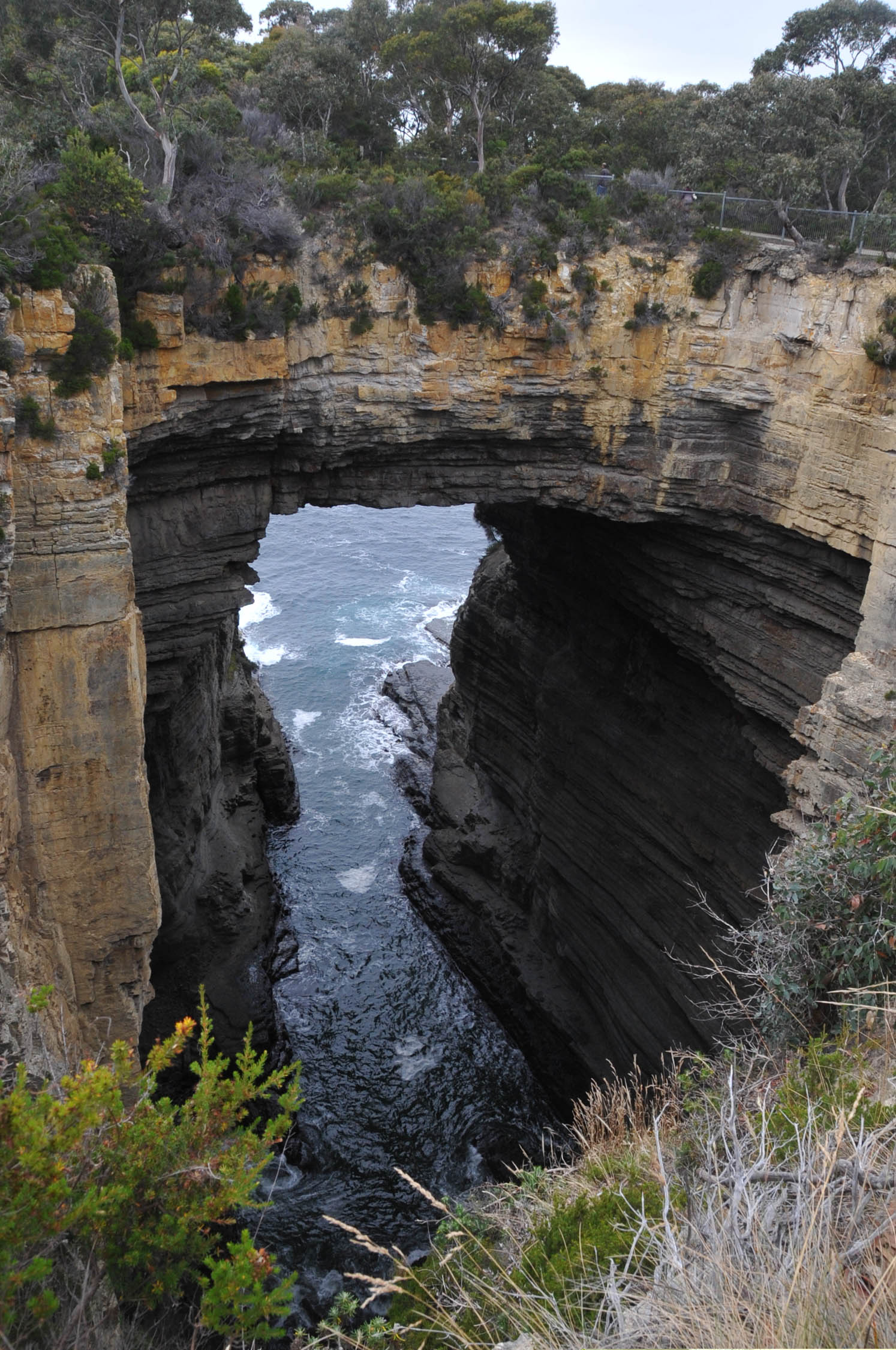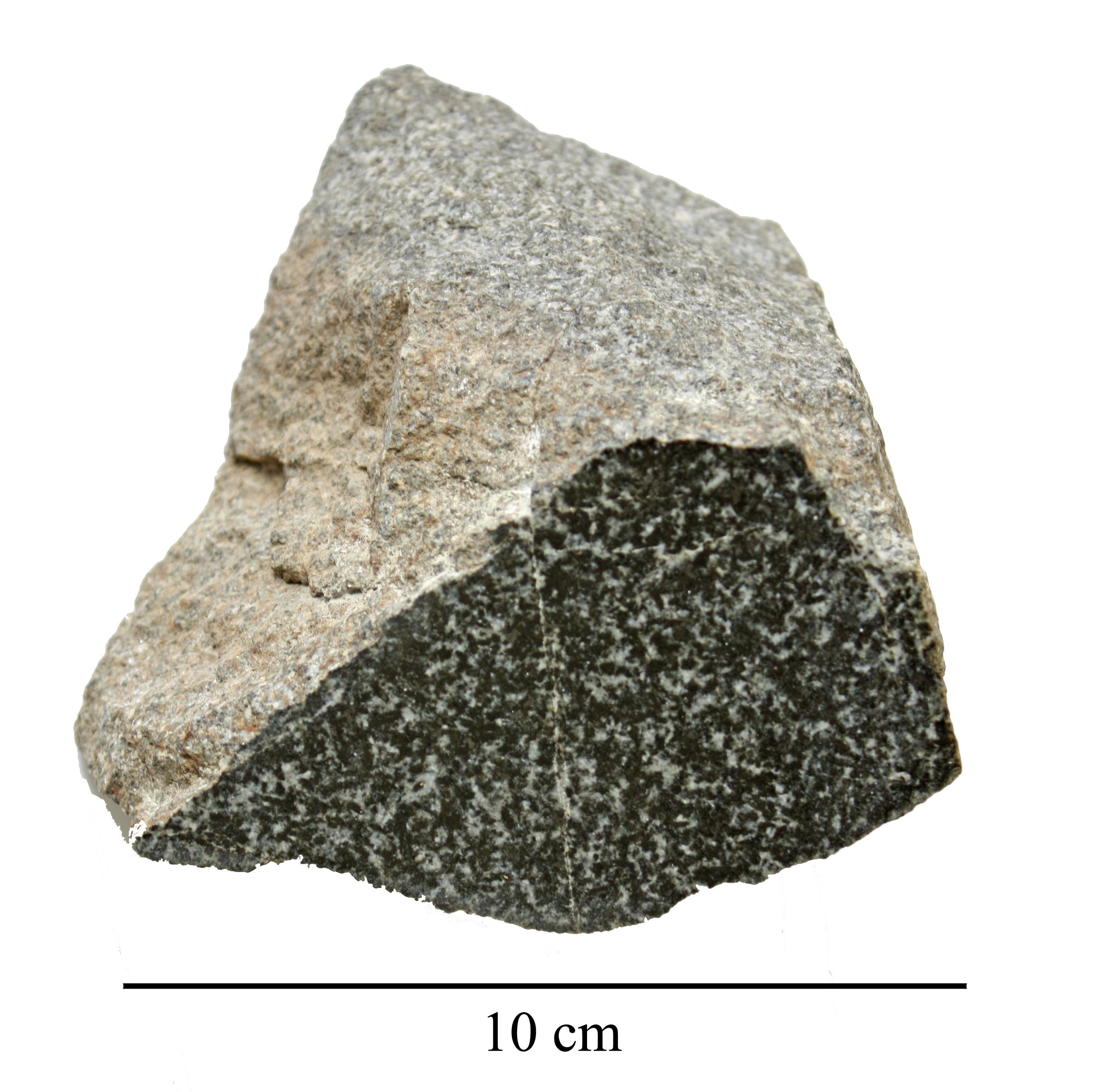|
Cape Raoul
Cape Raoul is a rural locality and a natural feature in the local government area of Tasman in the South-east region of Tasmania. It is located about south of the town of Nubeena. The 2016 census determined a population of nil for the state suburb of Cape Raoul. Cape Raoul is a confirmed suburb/locality. Boundaries and location The shore of the Tasman Sea is the locality's western, southern, and eastern boundaries. The cape is contained within the locality, which is contained within the western section of Tasman National Park. Cape Raoul (the natural feature) is situated at the southernmost part of the Tasman Peninsula, in south eastern Tasmania. It forms the coastline of Raoul Bay, and is part of the dolerite landscape of the Tasman National Park.https://parks.tas.gov.au/explore-our-parks/tasman-national-park Tasman National Park Geography The cape features rock platforms, towering cliffs, columns and off-shore islands. There is a cliff with scenic views of the coastli ... [...More Info...] [...Related Items...] OR: [Wikipedia] [Google] [Baidu] |
2016 Australian Census
The 2016 Australian census was the 17th national population census held in Australia. The census was officially conducted with effect on Tuesday, 9 August 2016. The total population of the Commonwealth of Australia was counted as – an increase of 8.8 per cent or people over the . Norfolk Island joined the census for the first time in 2016, adding 1,748 to the population. The ABS annual report revealed that $24 million in additional expenses accrued due to the outage on the census website. Results from the 2016 census were available to the public on 11 April 2017, from the Australian Bureau of Statistics website, two months earlier than for any previous census. The second release of data occurred on 27 June 2017 and a third data release was from 17 October 2017. Australia's next census took place in 2021. Scope The Australian Bureau of Statistics (ABS) states the aim of the 2016 Australian census is "to count every person who spent Census night, 9 August 2016, in A ... [...More Info...] [...Related Items...] OR: [Wikipedia] [Google] [Baidu] |
Tasman National Park
The Tasman National Park is a national park in eastern Tasmania, Australia, approximately east of Hobart. The park is situated on part of both the Forestier and Tasman peninsulas and encompasses all of Tasman Island. History Whaling activity took place in the 1830s and 1840s. The park was proclaimed under the Regional Forest Agreement on 30 April 1999. The Tasman Island Lighthouse (constructed in 1906) is located on Tasman Island, which is part of the park. This lighthouse and weather station has been unmanned since 1977.Brothers, Nigel; Pemberton, David; Pryor, Helen; & Halley, Vanessa. (2001). ''Tasmania’s Offshore Islands: seabirds and other natural features''. Tasmanian Museum and Art Gallery: Hobart. Geography At above sea level, the columnar dolerite cliffs at Cape Pillar and Tasman Island are among the highest in the world. Dolerite is a rare rock type on mainland Australia. Land formations accessible by road include the Blowhole (a hole at the inland end o ... [...More Info...] [...Related Items...] OR: [Wikipedia] [Google] [Baidu] |
Headlands Of Tasmania
A headland, also known as a head, is a coastal landform, a point of land usually high and often with a sheer drop, that extends into a body of water. It is a type of promontory. A headland of considerable size often is called a cape.Whittow, John (1984). ''Dictionary of Physical Geography''. London: Penguin, 1984, pp. 80, 246. . Headlands are characterised by high, breaking waves, rocky shores, intense erosion, and steep sea cliff. Headlands and bays are often found on the same coastline. A bay is flanked by land on three sides, whereas a headland is flanked by water on three sides. Headlands and bays form on discordant coastlines, where bands of rock of alternating resistance run perpendicular to the coast. Bays form when weak (less resistant) rocks (such as sands and clays) are eroded, leaving bands of stronger (more resistant) rocks (such as chalk, limestone, and granite) forming a headland, or peninsula. Through the deposition of sediment within the bay and the eros ... [...More Info...] [...Related Items...] OR: [Wikipedia] [Google] [Baidu] |
Tasman Island
The Tasman Island, part of the Tasman Island Group, is an oval island with an area of , lying close to the south-eastern coast of Tasmania, Australia. The island is located in the Tasman Sea, situated off the Tasman Peninsula and is contained within the Tasman National Park. The island is a plateau surrounded by steep diabase, dolerite cliffs, with its highest point Australian Height Datum, above sea level (asl) and an average plateau height of asl. It is the site of the Tasman Island Lighthouse and weather station, which has been automated since 1976 and unstaffed since 1977. Flora and fauna Plants The island was once thickly forested. The forest has largely disappeared as a result of cutting the trees for firewood and of intense wildfire, fires. When the lighthouse was staffed the keepers kept livestock, including cattle, sheep and draft horse, draught horses, and maintained grassland for their grazing. Areas of grassland remain along with other vegetation communities ... [...More Info...] [...Related Items...] OR: [Wikipedia] [Google] [Baidu] |
Dolerite
Diabase (), also called dolerite () or microgabbro, is a mafic, holocrystalline, subvolcanic rock equivalent to volcanic basalt or plutonic gabbro. Diabase dikes and sills are typically shallow intrusive bodies and often exhibit fine-grained to aphanitic chilled margins which may contain tachylite (dark mafic glass). ''Diabase'' is the preferred name in North America, while ''dolerite'' is the preferred name in the rest of the English-speaking world, where sometimes the name ''diabase'' refers to altered dolerites and basalts. Some geologists prefer to avoid confusion by using the name ''microgabbro''. The name ''diabase'' comes from the French ', and ultimately from the Greek - meaning "act of crossing over, transition". Petrography Diabase normally has a fine but visible texture of euhedral lath-shaped plagioclase crystals (62%) set in a finer matrix of clinopyroxene, typically augite (20–29%), with minor olivine (3% up to 12% in olivine diabase), magnetite (2%), and i ... [...More Info...] [...Related Items...] OR: [Wikipedia] [Google] [Baidu] |
The Mercury (Hobart)
''The'' ''Mercury'' is a daily newspaper, published in Hobart, Tasmania, Australia, by Davies Brothers Pty Ltd (DBL), a subsidiary of News Corp Australia, itself a subsidiary of News Corp. The weekend issues of the paper are called ''Mercury on Saturday '' and ''Sunday Tasmanian''. The current editor of ''The'' ''Mercury'' is Craig Warhurst. History The newspaper was started on 5 July 1854 by George Auber Jones and John Davies. Two months subsequently (13 September 1854) John Davies became the sole owner. It was then published twice weekly and known as the ''Hobarton Mercury''. It rapidly expanded, absorbing its rivals, and became a daily newspaper in 1858 under the lengthy title ''The Hobart Town Daily Mercury''. In 1860 the masthead was reduced to ''The Mercury'' and in 2006 it was further shortened to simply ''Mercury''. With the imminent demise of the ( Launceston) '' Daily Telegraph'', ''The Mercury'', from March 1928, used the opportunity to increase their penetration ... [...More Info...] [...Related Items...] OR: [Wikipedia] [Google] [Baidu] |
Columnar Jointing
Columnar jointing is a geological structure where sets of intersecting closely spaced fractures, referred to as Joint (geology), joints, result in the formation of a regular array of polygonal Prism (geometry), prisms, or columns. Columnar jointing occurs in many types of igneous rocks and forms as the rock cools and contracts. Columnar jointing can occur in cooling lava flows and ashflow tuffs (ignimbrites), as well as in some shallow intrusions. Columnar jointing also occurs rarely in sedimentary rocks if they have been heated by nearby hot magma. The columns can vary from 3 meters to a few centimeters in diameter, and can be as much as 30 meters tall. They are typically parallel and straight, but can also be curved and vary in diameter. An array of regular, straight, and larger-diameter columns is called a colonnade; an irregular, less-straight, and smaller-diameter array is termed an entablature. The number of sides of the individual columns can vary from 3 to 8, with 6 sides ... [...More Info...] [...Related Items...] OR: [Wikipedia] [Google] [Baidu] |
Dolerite
Diabase (), also called dolerite () or microgabbro, is a mafic, holocrystalline, subvolcanic rock equivalent to volcanic basalt or plutonic gabbro. Diabase dikes and sills are typically shallow intrusive bodies and often exhibit fine-grained to aphanitic chilled margins which may contain tachylite (dark mafic glass). ''Diabase'' is the preferred name in North America, while ''dolerite'' is the preferred name in the rest of the English-speaking world, where sometimes the name ''diabase'' refers to altered dolerites and basalts. Some geologists prefer to avoid confusion by using the name ''microgabbro''. The name ''diabase'' comes from the French ', and ultimately from the Greek - meaning "act of crossing over, transition". Petrography Diabase normally has a fine but visible texture of euhedral lath-shaped plagioclase crystals (62%) set in a finer matrix of clinopyroxene, typically augite (20–29%), with minor olivine (3% up to 12% in olivine diabase), magnetite (2%), and i ... [...More Info...] [...Related Items...] OR: [Wikipedia] [Google] [Baidu] |
Tasman Peninsula
The Tasman Peninsula, officially Turrakana / Tasman Peninsula, is a peninsula located in south-east Tasmania, Australia, approximately by the Arthur Highway, south-east of Hobart. The Tasman Peninsula lies south and west of Forestier Peninsula, to which it connects via an isthmus called Eaglehawk Neck. This in turn is joined to the rest of Tasmania by an isthmus called East Bay Neck, near the town of Dunalley, approximately by road from Hobart. The peninsula is surrounded by water; to the north by Norfolk Bay, to the northwest by Frederick Henry Bay, to the west and south by Storm Bay, and to the east by the Tasman Sea. Description Many smaller towns are also located on the Tasman Peninsula the largest of which are Nubeena and Koonya. Smaller centres include Premaydena, Highcroft and Stormlea. The Conservation Park, located on the main highway at Taranna, is a popular local visitor attraction along with the World Heritage Port Arthur Historic Site and a number of bea ... [...More Info...] [...Related Items...] OR: [Wikipedia] [Google] [Baidu] |
CAPE RAOUL, TASMAN NATIONAL PARK
A cape is a clothing accessory or a sleeveless outer garment which drapes the wearer's back, arms, and chest, and connects at the neck. History Capes were common in medieval Europe, especially when combined with a hood in the chaperon. They have had periodic returns to fashion - for example, in nineteenth-century Europe. Roman Catholic clergy wear a type of cape known as a ferraiolo, which is worn for formal events outside a ritualistic context. The cope is a liturgical vestment in the form of a cape. Capes are often highly decorated with elaborate embroidery. Capes remain in regular use as rainwear in various military units and police forces, in France for example. A gas cape was a voluminous military garment designed to give rain protection to someone wearing the bulky gas masks used in twentieth-century wars. Rich noblemen and elite warriors of the Aztec Empire would wear a tilmàtli; a Mesoamerican cloak/cape used as a symbol of their upper status. Cloth and clothing ... [...More Info...] [...Related Items...] OR: [Wikipedia] [Google] [Baidu] |
Tasmania
) , nickname = , image_map = Tasmania in Australia.svg , map_caption = Location of Tasmania in AustraliaCoordinates: , subdivision_type = Country , subdivision_name = Australia , established_title = Before federation , established_date = Colony of Tasmania , established_title2 = Federation , established_date2 = 1 January 1901 , named_for = Abel Tasman , demonym = , capital = Hobart , largest_city = capital , coordinates = , admin_center = 29 local government areas , admin_center_type = Administration , leader_title1 = Monarch , leader_name1 = Charles III , leader_title2 = Governor , leader_n ... [...More Info...] [...Related Items...] OR: [Wikipedia] [Google] [Baidu] |
South-east LGA Region
Councils of Tasmania are the 29 administrative districts of the Australian state of Tasmania. Local government areas (LGAs), more generally known as councils, are the tier of government responsible for the management of local duties such as road maintenance, town planning and waste management. Local government regions The local government areas of Tasmania are grouped into six regions: * Central * Hobart * Launceston * North-east * North-west and west * South-east Local government areas There are 29 local government areas of Tasmania: Towns and suburbs of councils areas The following is a list of councils areas grouped by region, and the major towns and suburbs within each LGA. Hobart area councils Greater Hobart contains six LGAs: *Brighton Council, containing the Hobart suburbs of Bridgewater, Gagebrook, Old Beach, and the towns of Brighton, Pontville, and Tea Tree. *City of Clarence, containing the Hobart suburbs of Acton, Bellerive, Cambridge, Clarendon Val ... [...More Info...] [...Related Items...] OR: [Wikipedia] [Google] [Baidu] |








